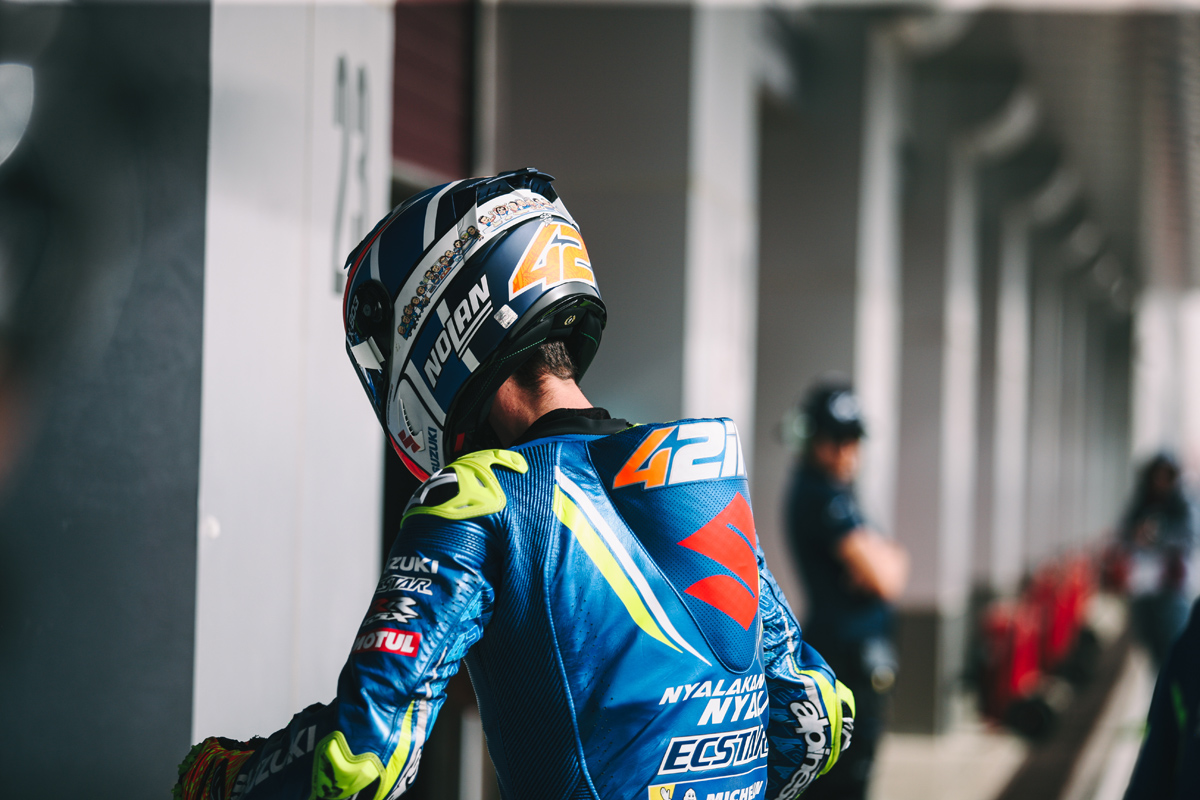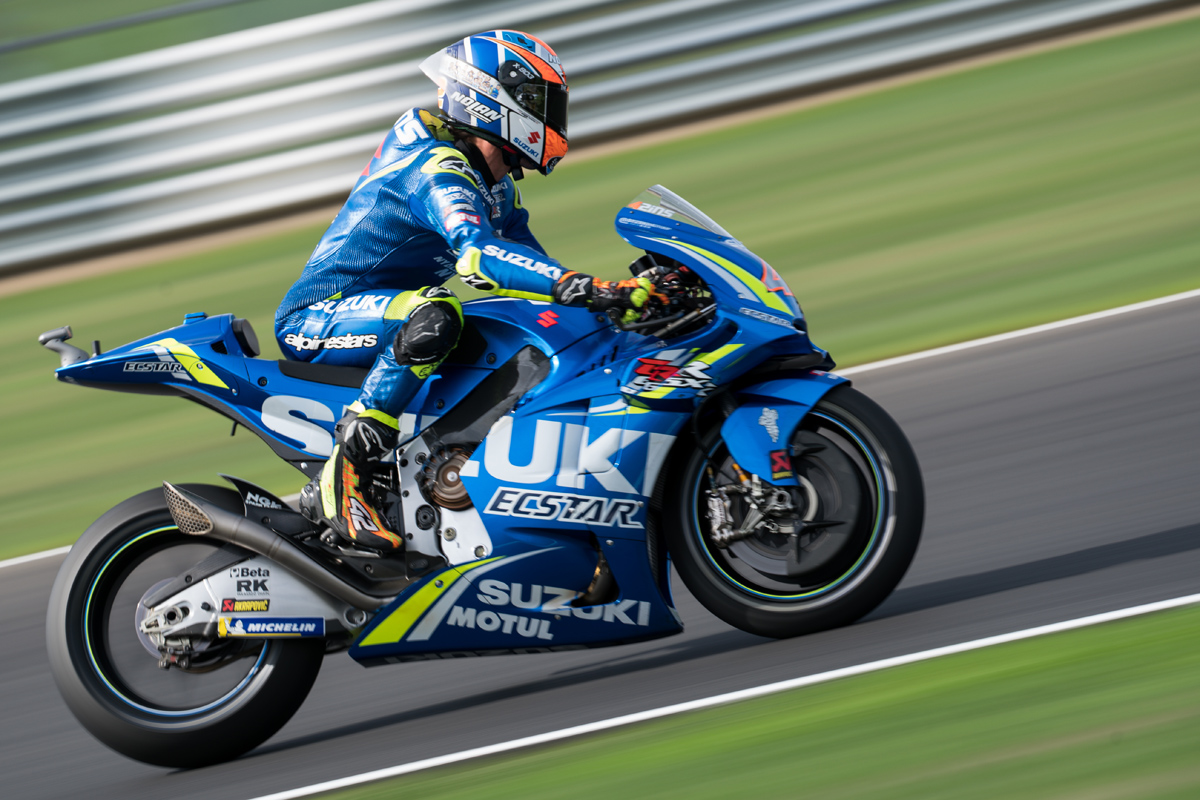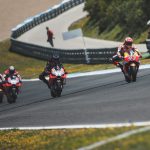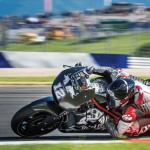Cast your mind back to Valencia two years ago. On the Tuesday that followed the season’s last race, a gaggle of much hyped rookies entered their new garages, sat on new bikes, and familiarised themselves with a new crew of technicians. Of the four making the step up, most was expected of Alex Rins, a new addition to the Suzuki stable, an outstanding talent who scored a pole position in just his second ever GP and a two-time runner-up in the junior categories, no less.
But here was a rider whose meekness off the bike left you wondering whether the necessary desire to succeed at the very top was in his possession. A fair share of question marks surrounded the happy-go-lucky figure then. At 20 years old, Rins’ quest to wrestle the Moto2 world crown out of Johann Zarco’s grasp had fallen away badly. In that season’s climax, a broken collarbone limited him to just one podium in his final seven races in the class. He went missing in a handful of critical races. And what of that crucial focus so necessary when the chips are down? Well, it was hard to overlook ex-team boss Sito Pons’ comments that summer and how they appeared to go unheeded. “Zarco has to become his obsession, his only thought,” the ex-250cc champ told veteran journalist Manuel Pecino. “I told him to forget about Twitter, sunglasses and all this other nonsense. Alex has to decide what he wants to be here for…”
After a disastrous end of season, Rins first outing on a 260bhp MotoGP machine didn’t go much better. Trackside observers noted how awkward he appeared as he grappled with the added horsepower and Michelin’s spec rubber. A front-end fall and impact with a criminally under-protected trackside barrier on the outside of turn twelve soon compressed two vertebrae, and had him moving gingerly into through to the following year. Having encountered so many setbacks in the months before, this was a challenge that would bring the requisite desire into focus. Could Rins, as Pons posited, “forget … all this other nonsense” and establish himself in at team still reeling from Maverick Viñales’ departure?

Well, what a difference two seasons makes. Those same doubts have been put to bed with some conviction as Rins can now boast of a season of genuine quality. Viñales was nothing but an afterthought during a year in which he secured fifth overall, comprehensively outperforming more experienced team-mate Andrea Iannone in the championship standings, and racking up five podiums, and five further top six finishes along the way. Factory legend Kevin Schwantz has stated he is “the future … I think Alex might be one of the riders that might be able to give Marquez a run for his money.” And had it not been for an early inconsistent streak that led to four crashes in the first seven outings, there’s good reason to believe Rins could have finished well above not just one of the Movistar Yamahas, but two.
Not only did his second place at a sodden Valencia on Sunday come as something of a disappointment after leading 14 of the 27 laps; he was even fielding questions as to whether he would be playing a part in next year’s title race afterward – a sure sign of Rins’ blossoming, and some journey for a rider whom his team manager still considers “almost a rookie.”
If Viñales’ second season with Suzuki was nothing short of exceptional, consider this: Rins scored more podiums (five to Viñales’ four). And as Suzuki’s team boss Davide Brivio is only too keen to point out, “We’re coming from a difficult 2017. That leaves some effect. You have to consider that with Alex he missed almost half of last year. His rookie route was more difficult [than Maverick’s].”
For this to follow the factory’s recent annus mirabilis, Suzuki deserves enormous credit. There was reason why Aleix Espargaro cited the GSX-RR to be one of the grid’s two best machines in early June. As Iannone’s four podiums bear out, the 2018 evolution was arguably Suzuki’s best, most complete machine since it made its full-time premier class return three years before. It handled beautifully. Thanks to the test team duo of Sylvain Guintoli and worldly engineer Tom O’Kane, many traction issues of the past were solved. And a new evolution of the engine gave riders greater top speed from Assen onwards.

Rins has had the benefit of learning his craft alongside crew chief Jose Manuel Cazeaux, too. Twice Viñales has tried to lure the Argentinean to Yamaha. But twice he has turned his ex-rider down. A technician with intimate knowledge of the GSX-RR, Cazeaux never loses sight of the bigger picture. From a premier class debut in Qatar, the correct working method has been drilled into his rider. And in Rins, now 22, he has found a less-spiky presence than Viñales, a rider willing to listen, and fully absorb. Rarely does he top free practice sessions. Nor is he panicked when not featuring among the leading names on a Friday. But Sunday’s race is always in mind.
“He’s building his method, a feeling for what is happening on the bike, and transmitting this to the team,” Cazeaux told me last year. “Sometimes when you’re on track, you find another rider and you try to follow to do a good lap, but you forget what you’re doing. It’s very important to do mini-long runs. We need to a minimum quantity of laps to be able to analyse and make some statistical analysis of what is better and what is worse.”
But to downplay Rins’ own input in his recent rise would be to overlook one of the season’s more pressing storylines. Contrast his fortunes with his more colourful, sometimes-maddening team-mate through the year’s summer months. Such were his continued woes with managing the rear tyre, Iannone’s scowl had most sensible hacks dodging Suzuki hospitality as though the lurgy was contained within. But this was often one of Rins’ great strengths. “Alex is really good at managing the tyre,” says Brivio. “For instance at Misano, where they were an issue, and we needed him to manage he did a good job. He’s able to do that when necessary. Being young, he’s already at a good level in terms of race management.”
Friendly and softly spoken to the extent of sounding out of place among the paddock’s cast of egos, Rins may just give Shinya Nakano a run for his money as “most unassuming racer” to grace the paddock in recent times. Speaking to him in person can require a double-take; is this quiet, gentle figure really the same person who took such glee in barging Marquez on the exit of Strubben in his coming-of-age ride at Assen? It was there, under the intense Dutch summer sun, where Rins really put to bed accusations he lacked the required bite in such contests.

So where does he go from here? Is it really too much of a push to think of him as a regular front-runner in 2019? Suzuki is already confident he won’t shy away as the factory’s undisputed figurehead now Iannone has gone. “Already in the past winter Alex made his own selection of his own parts,” recalls Brivio. “We tested chassis, engine, swingarms and Alex made his own selection. He built up his own package. He’s quite sensitive and good in development in terms of what he needs, what he likes.
“Each [rider] made his own selection [last winter] but Andrea sometimes went back. In Aragon for example, Andrea said he went back and used the setting of Alex. Sometimes he went in Alex’s direction.”
There were many similarities to draw between Viñales and Rins’ second season among the elite. Unlike his countryman, however, Rins now has the chance to further his career without the distraction of a high-profile move. True to form, he batted away suggestions he enters 2019 as a title contender. “It’s too early to think of the target for the next year,” he said. “First of all, I want to get my first victory in a MotoGP with Suzuki. This is our main goal.” But if he continues to guide the Hamamatsu factory in the way he has, Schwantz’s predictions that a Marquez challenge may not seem so far-fetched after all.
Words by Neil Morrison @NeilMorrison87
Photos by CormacGP @cormacgp / Polarity Photo @polarityphoto








